They were made in England to exacting specifications, such as that they must be able to be transported by mules to the Lake, each part not exceeding 3.5 cwts (about 160kg) in weight to be assembled there. The parts were shipped around Cape Horn in 1862 and brought from the formerly Peruvian port of Arica all the way up to the Lake at 3800m AMSL by 1869, where they were launched on Christmas Day of 1870.

One of these ships - the Yavari - lies before Puno, on the peruvian side of the Lake.

Having been extended by 10 feet in length and her engines fired by dried llama dung for want of coal...

... she is now awaiting her safety equipment and inspection before heading out on the Lake with passengers again.
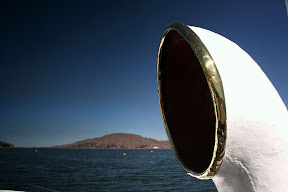

The low salinity and high elevation preserved the ship's component parts rather well, so most of the fittings are original.
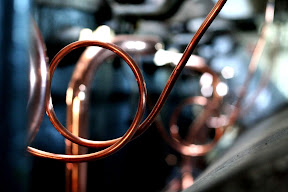
Peek into the engine room, where the original 60hp steam engine was replaced by a Bolinder (forerunner of Volvo, apparently) semi-Diesel engine with 320hp.


Fascinating doorknobs - okay, if you're into that kind of thing :-)
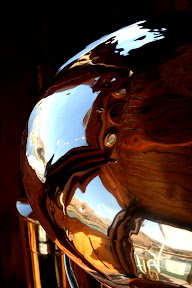
The ship's compass is housed in an old polished brass casing that makes a great reflective surface for a wide-angle view of the bridge.
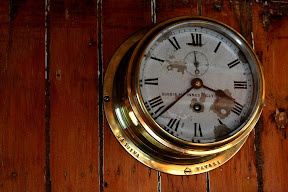
Most of the original implements and fittings are stamped lovingly with the name of the ship.

The ship's telegraph, transmitting orders from the bridge to the engine room.

I assume these will eventually hold the emergency rafts.

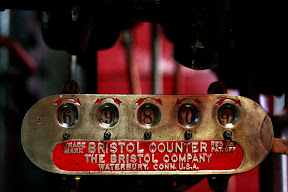
Engine revolution counter...

... and more engine valves. I'm sorry, you've stumbled into an engineer's wet dream...

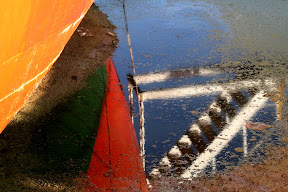
I did spend a bit of time on the ship and around it, because two equally impressive old ships - one a restaurant - lie berthed close by, getting a workover.
Keine Kommentare:
Kommentar veröffentlichen